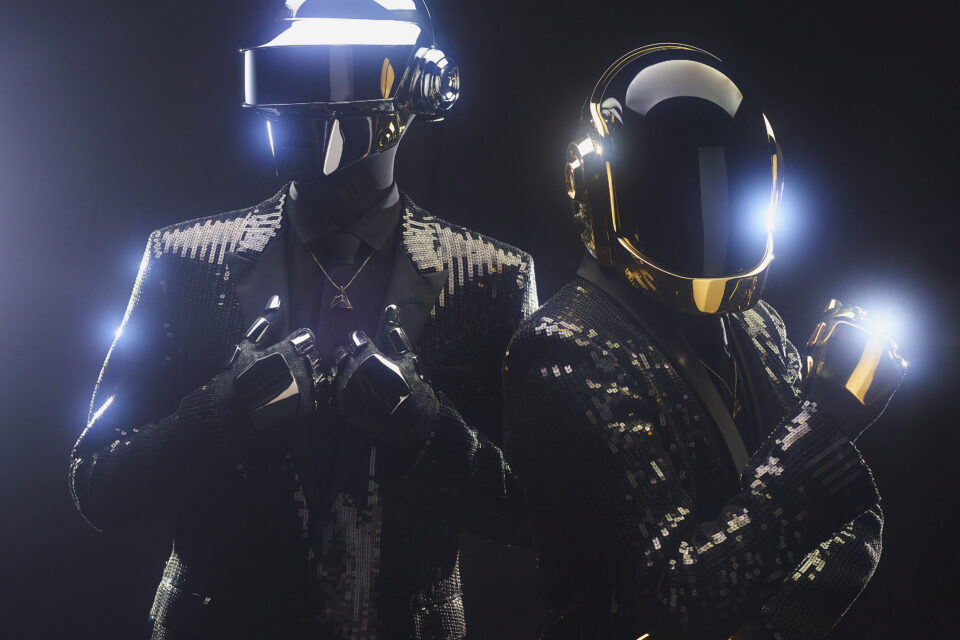Daft Punk

Daft Punk: The Robotic Pioneers of Electronic Music
Daft Punk, the legendary French electronic music duo, revolutionized the world of dance music with their boundary-pushing sound and distinct robotic personas. Formed in 1993 by Thomas Bangalter and Guy-Manuel de Homem-Christo, Daft Punk became a cultural phenomenon, pushing the limits of music and creativity. Here’s a look back at their incredible journey.
Origins: From Indie Rock to Electronic Masters
Before Daft Punk took over the electronic scene, Thomas Bangalter and Guy-Manuel de Homem-Christo were part of an indie rock band called Darlin’. The group disbanded in the early 90s, but this departure led to the birth of Daft Punk. Their early days were shaped by the emerging French house movement, blending house, funk, disco, techno, and synth-pop in a way that had never been heard before.
Managed by Pedro Winter of Ed Banger Records from 1996 to 2008, Daft Punk quickly found success in the late 90s, becoming part of a revolutionary wave of electronic music that would go on to reshape the genre.
Breakthrough: Homework and the Rise to Fame
Daft Punk’s debut album, Homework, released in 1997, was an instant hit. The album was praised for its bold experimentation, and the singles “Around the World” and “Da Funk” became anthems of the late ’90s electronic scene. It was clear from the start that Daft Punk was something special, with their unique mix of electronic beats and funky grooves setting them apart from other acts.
The Robot Era: Discovery and the Persona Shift
One of the most iconic aspects of Daft Punk’s career was their decision to adopt robot personas. Starting in 1999, the duo began wearing helmets and outfits to mask their identities during public appearances. This mysterious image became synonymous with their music, adding an extra layer of intrigue and originality.
Their second album, Discovery (2001), took Daft Punk’s sound to new heights. With hit tracks like “One More Time,” “Digital Love,” and “Harder, Better, Faster, Stronger,” the album became a worldwide sensation. Discovery was not just an album—it was the soundtrack to an animated film, Interstella 5555, produced by the legendary Japanese artist Leiji Matsumoto. The album’s success solidified Daft Punk’s place in music history.
Experimentation: Human After All and Electroma
Daft Punk’s third album, Human After All (2005), marked a departure from their previous sound. With a more minimalistic approach, the album received mixed reviews, but tracks like “Robot Rock” and “Technologic” still became fan favorites, especially in the UK. That same year, Daft Punk took their creativity to the big screen, directing the avant-garde science-fiction film Electroma, which showcased their vision in a whole new medium.
The Live Experience: Alive 2007
In 2006 and 2007, Daft Punk embarked on a groundbreaking tour that would go down in history as one of the most influential live shows in electronic music. Their Alive 2007 performances showcased a dazzling mix of music, visuals, and stage production that would go on to define the live electronic experience. The album of the same name won a Grammy Award for Best Electronic/Dance Album, further solidifying their legacy. The tour is often credited with helping to bring electronic music to a mainstream audience in North America.
A New Era: Random Access Memories and Global Success
After a few years of relative silence, Daft Punk returned in 2013 with their fourth and final studio album, Random Access Memories, under Columbia Records. The album was a departure from their previous sound, incorporating live instrumentation and guest appearances from legends like Nile Rodgers, Pharrell Williams, and Giorgio Moroder.
The lead single, “Get Lucky,” became a global sensation, reaching the top 10 in 27 countries and winning multiple Grammy Awards in 2014, including Album of the Year and Record of the Year. Random Access Memories marked the culmination of their career, earning them even more accolades, including a place in Rolling Stone’s list of the 500 Greatest Albums of All Time.
The Final Chapter: Legacy and Split
Daft Punk’s impact on music reached its peak in 2016 when they collaborated with The Weeknd on the smash hit “Starboy,” which became their first number-one song on the Billboard Hot 100. The duo was ranked as the 12th-greatest musical duo of all time by Rolling Stone in 2015, and their place in music history was firmly cemented.
However, in 2021, Daft Punk made the heart-wrenching announcement of their split. After 28 years of trailblazing innovation and boundary-pushing music, the world would no longer see the robotic duo perform together.
The Enduring Legacy of Daft Punk
Daft Punk’s influence on electronic music, pop culture, and even fashion is undeniable. They helped shape the sound of modern dance music and inspired countless artists across genres. From their iconic robot helmets to their genre-defying sound, Daft Punk was much more than just a music group—they were pioneers, trendsetters, and visionaries.
As we bid farewell to Thomas and Guy-Manuel, we can look back at their groundbreaking career with gratitude. Their music will continue to inspire, energize, and captivate fans for generations to come.
Until Next Time,
Conrad
